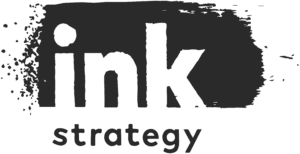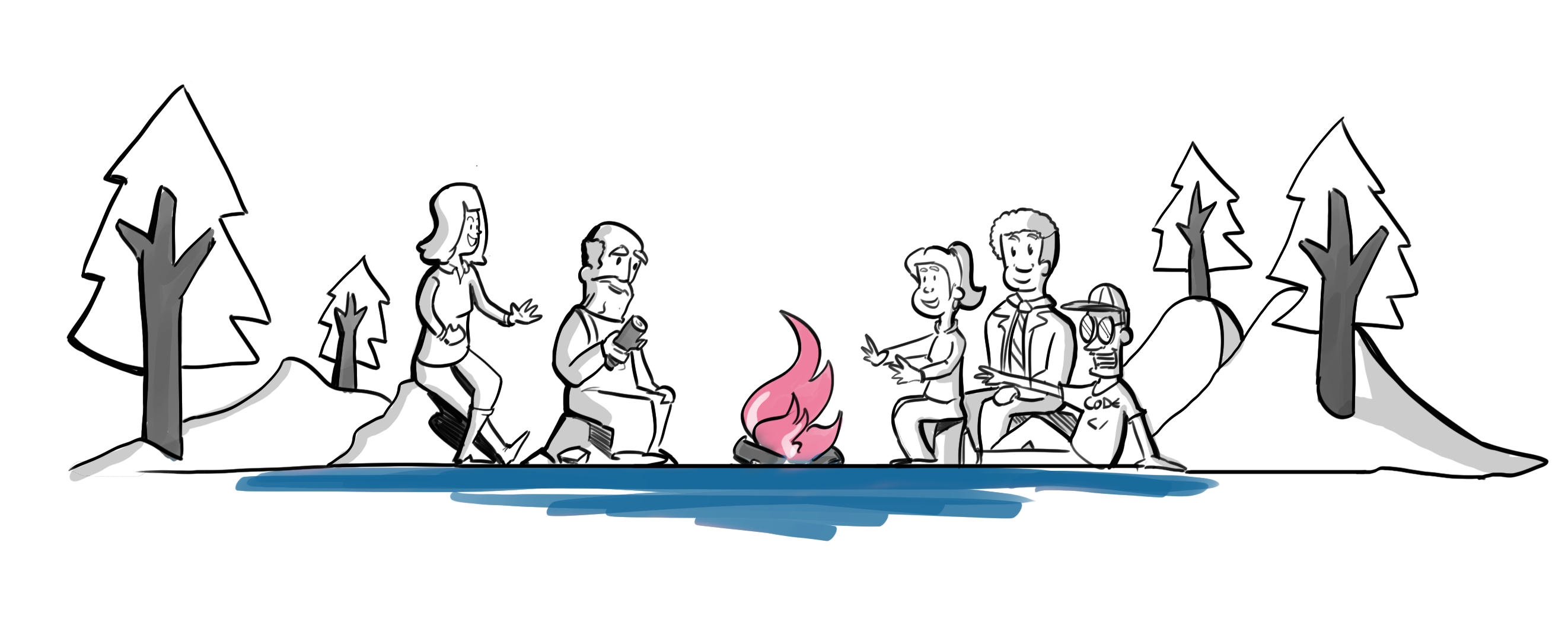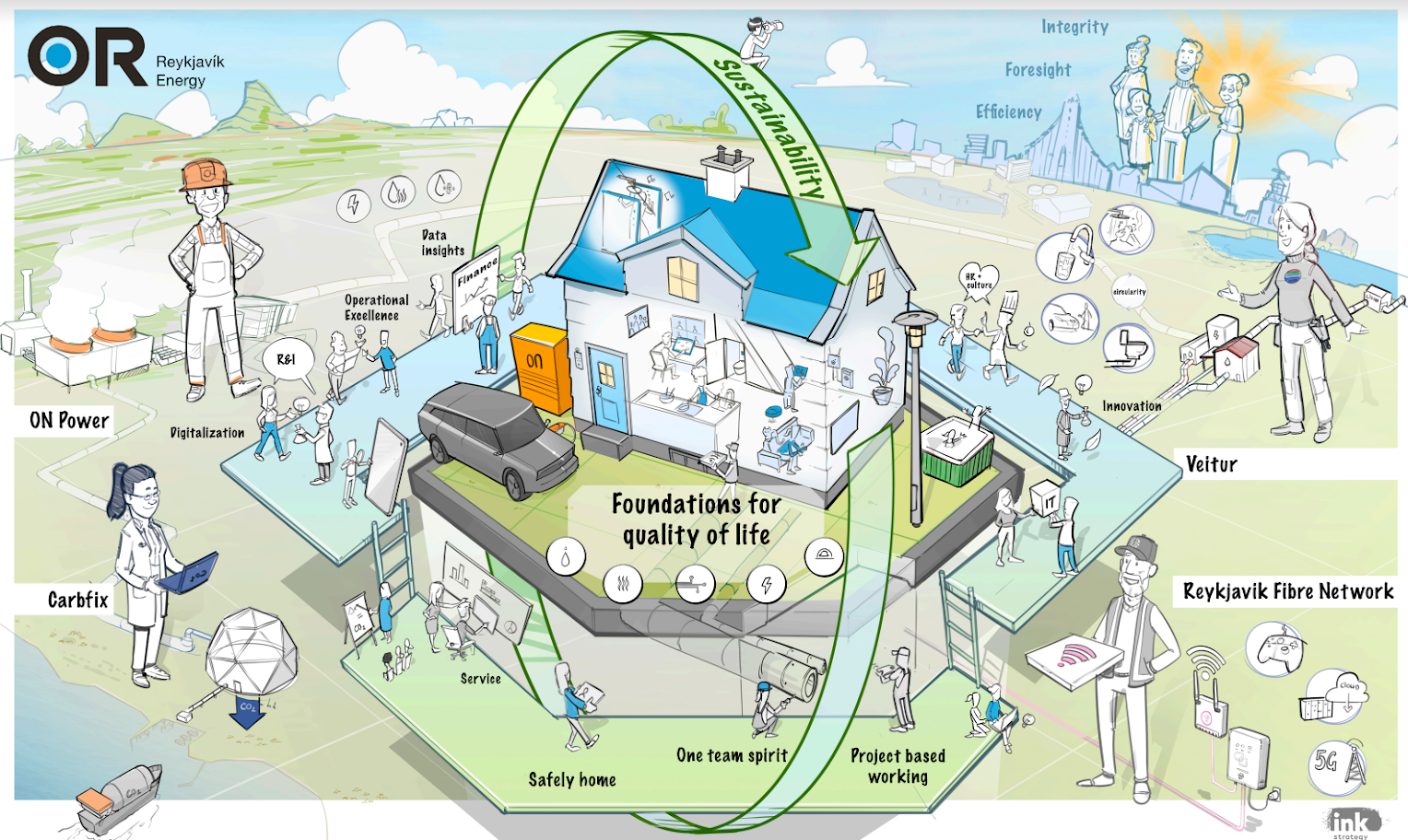Everything you need to know about storytelling to make your story stick.
‘Vision without action is a daydream. Action without vision is a nightmare’, is a famous Japanese proverb. The OGSM model is the bridge between strategy and execution. It is a strategic planning tool used by organisations to help define specific objectives and goals, and to translate those into concrete action plans. This article explains what the OGSM model is and how you can use it in your organization.

What is the OGSM model?
The OGSM model is a structured framework that helps organisations align their operations with their overall objectives and goals, it provides a roadmap for achieving the intended results, while ensuring that progress is regularly monitored and evaluated. The acronym OGSM stands for Objectives, Goals, Strategies and Measures.
Some key advantages are outlined in this table.
Advantages
Bigger picture overview
Bridges the gap between vision and operations
Concise format (fits 1 A4)
Makes communication easier
Enables measurement and evaluation
Disadvantages
Lacks granularity
Limited flexibility, adaptability
Lacks transparency
Risk of impersonal and top-down
Terminology and structure can be confusing and require time to understand
Read further if you…
- Want to build a deeper understanding of the OGSM model.
- Would like to try out using the model with our very own template.
- Would like to know the benefits and drawbacks of the OGSM model.
- Are looking for support with the OGSM model or other strategy models.
Why use the OGSM model?
The organisation-wide vision is generally ambitious, but often lacks a clear connection to day to day operations. The OGSM model helps bridge that gap. It offers a systemic approach with a step-by-step process to create direct links between the organisation’s overall objectives and concrete daily activities.
The OGSM model provides strategic clarity. The format forces you to choose and make clear choices to realise your ambition. Its concise format (which fits an A4 paper) converts your strategic business plan to a readable one-pager, making it easy to communicate the organisations’ strategic priorities. This in turn helps employees’ understanding of and their contribution to the organisations’ mission and vision.
Another important advantage of the OGSM model is that it helps increase internal buy-in. As employees can understand the purpose of their work, offering a sense of positive entitlement and usefulness. The OGSM model as a shared explanation of the organization’s strategic direction, fosters transparency and encourages teamwork.
The OGSM model enables measurement and evaluation. It includes measures for tracking progress towards objectives and goals, which allows organizations to evaluate their performance and make adjustments as needed.
Overall, the OGSM model is a useful management tool for any organization looking to improve its focus, communication, decision-making and performance.
The OGSM model is suitable for all types of strategic plans, regardless of the team size.
Template of the OGSM model


The steps in the OGSM model
There is a certain order for working with the OGSM model. These are the key steps to take:
Research


Do your research. Conduct both internal and external research to better understand your context; the market and your organisations’ current state. As you gather more information and insight about your organisation’s strengths and weaknesses, the more informed your decision-making can become. You determine the limits and possible opportunities associated with your organisation. This will serve as the basis for an effective strategy development using the OGSM model.
Tools that can help you with your research are: SWOT analysis, McKinsey’s 7S Model, Porter’s 5 Forces Explained, Pirate Funnel (AARRR)
Objective


Consider your objective; what change do you want to see and work towards? The objective is your vision for what you want to achieve in the long term, taking into account your fundamental principles and mission statement. Its the shared dream. An objective is always a qualitative, long-term result. For the OGSM model there should ideally be one objective.
Elements of a great objective include: Clear and concise, Easy to remember, Resonates and live among your target audience, Aims beyond the present state of the business.
Goals


The next step is to break down your objective(s) into concrete, measurable goals. Goals are the milestones that need to be achieved. Where an objective is qualitative, a goal is quantitative. For the OGSM model, set several clear and measurable goals that translate the objective into quantifiable metrics. Goals are specific, measurable, attainable, realistic and time-bound. In other words, they are SMART targets that help an organization achieve its objective. Goals should be ambitious but feasible and should be broken down into smaller, more manageable tasks.
Strategies


Now consider the required steps to achieve your goals. Which strategic choices do you need to make to realise the organisation’s ambition? In the OGSM model, strategies are the action plans that outline how your organization will achieve its goals. Strategies should be specific and actionable. Strategies are basically the answer to the challenges that your organization faces (strengths, weaknesses, opportunities and threats). For each goal in the OGSM model a separate strategy is developed in order to achieve it.
Measures


In the OGSM model, measures are metrics that are identified to monitor progress of your strategies. Which results do you aim to achieve, and how do you track progress? So measures are basically a set of indicators, linked to specific strategies. Measures help you to monitor progress and inform decision making on whether strategies need to be changed. Measures are often quantitative, but can also be qualitative – for example in measuring user or customer satisfaction.
Measures and goals are not the same thing. Measures are linked to a strategy, whereas goals are overarching (often financial) metrics of what your organisation wants to achieve.
It is advisable to keep the number of measures limited to three (or less) metrics per strategy. Only measure what you need to measure.
Actions


For each strategy, measures are set and an action plan is defined. What are you going to do, and when are you going to do it? The action plan includes: What: define concrete actions per strategy. you can aim for 2 tot 4 actions. When: Define the time frame and deadline per action. Who: Define per action who is responsible or accountable.
The OGSM model needs to be monitored and reviewed on a regular basis, in order to expose and optimise low performing strategies.
Monitor, evaluate, learn, and steer with the OGSM model
The OGSM model needs to be monitored and reviewed on a regular basis, in order to expose and optimize low-performing strategies.
The two key questions that need to be considered include:
- Are we doing things right? The focus is on evaluating, and understanding if we are making a difference, and our contribution to change.
- Are we doing the right things? The focus here is on learning to understand if strategies must be adapted.
To stay aligned on progress and performance, teams can organise (bi)monthly evaluation meetings and (quarterly) steering meetings.
Also make sure to agree on the division of roles for execution of the OGSM model:
- An action owner: is accountable for implementing their actions and reporting on progress.
- A strategy owner: is accountable for overseeing the execution of their strategy.
- A process owner oversees the overall way of working.
Examples of the OGSM model



We created an organisation wide OGSM model highlighting a number of strategic themes and a model. From objectives all the way to leading and lagging indicators.


Cascading the OGSM model in the organisation
An effective way to communicate the strategic direction of the organization and ensure that everyone is working towards the same goals is to cascade the OGSM model in the organisation. Doing so also helps to identify any gaps or misalignments in the organization’s objectives and strategies.
What is cascading OGSM?
Cascading the OGSM model is to split up your overall objective into several sub-goals. The strategies of the overall organizational OGSM are ‘translated’ to the relevant level of the sub-OGSM. These sub-goals then operate as the Objectives of one or more underlying OGSMs.
There can be multiple OGSM models in place at the same time, as long as there is one overarching OGSM model, and the underlying OGSMs are aligned with the overarching one.
By cascading, you can make your Goals and Strategies more concrete and manageable at different levels of your organization. Individual departments, teams, and employees can work on lower-level objectives and strategies that are relevant for them, without losing sight of the overall strategic objective.


First, we created a vision for the ‘failure maintenance’ process for the NS stations department. Examples of failures are broken elevators, roof leaks, or coffee machine failures. After this, we used the OGSM model to translate this vision into clear strategies and concrete actions, on the basis of earlier defined five strategic topics. The output helped the program manager to understand priorities and successfully set the right things in motion.
How to cascade your strategy using OGSM?
The cascading process ensures that each level of the organization is aligned with the overall strategic direction and objectives of the organization. It also helps in prioritizing the objectives and strategies at each level and ensures that everyone is working towards the same goals.
There are different ways the OGSM model can be cascaded in the organisation:


- Vertical cascading is when you subdivide the objective over sub-goals by team, department, country or region.
- Horizontal cascading is cascading over time. For example you could make an OGSM model for the medium or long term, and then cascade this into OGSM models for the short term, in annual plans.
- Scenario cascading is strategic plans based on different scenarios.
It’s important to know that there is not one ideal way to cascade an OGSM. However, we do like to point out the risk of cascading purely across departments, since this can easily result in a silo mentality: it is better to cascade across multiple process chains. If your organisation is active in different regions, a regional cascading could be considered. But you could also consider cascading based on product or service groups.


Drawbacks of the OGSM model
The OGSM model has some limitations to take into account:
- Lack of flexibility: the OGSM model’s aim is future-forward, which makes the model not as adaptable as other competitive strategy models. Your OGSM model may not be able to adjust to rapid market changes or volatility.
- Lack of granularity: OGSM maintains a view of the big picture. There is a risk that your strategies remain too broad and do not capture all the necessary details, leading to issues with measurement.
- Impersonal top-down approaches: If not managed appropriately, leadership can forget to include employees in the strategic planning process. That causes a disconnect between your high-level objectives and ground-level execution, the easiest way to lose company-wide buy-in.
- Lack of transparency: Difficult to maintain a high-level overview of OGSM progress if you keep plans in multiple and disconnected documents.
- Confusing terminology and structure: The OGSM model is structured differently than other strategic planning models, and it might be a bit challenging to understand at first.
- Stakeholders need to discuss and approve the objectives, which costs time. Focus and speed are necessary (assigning resources in a fast changing context).
Differences between the OGSM model and the OKR framework


There is overlap between the OGSM model and the OKR framework. Both the OGSM model as well as the OKR framework are strategic frameworks that aim to create alignment between future aspirations and day-to-day operations.
The OGSM model is mostly focused on a top-level strategy that cascades organization’s objectives down through different levels and time frames. OKR on the other hand, places more focus on small, meaningful initiatives and their eventual results. The emphasis is given to links between activities and outcomes. Most OKRs occur quarterly, while an OGSM functions as a longer term plan spanning several years.
Both the OGSM model and OKR framework can be used to create a top-down and bottom-up approach to strategy. OGSM will give your organization a full picture of the organisations strategy, while OKRs will make sure that day-to-day operations are aligned with the strategy.
What do we do at Ink Strategy?
We are Ink Strategy; we change by design. We are design thinking and behaviour change experts that support organisations with their change aspirations by creating awesome vision and strategy visuals. And we work with (leadership) teams to improve internal collaboration.
We bring the change power that your organisation needs to convert ideas to concrete action. We are experts in OGSM and supported many of our customers globally. We are people focused and love the challenge of ensuring that your aspirational change or innovation will be rolled out successfully.


FAQs about the OGSM model
Are measures in the model always quantitative?
No, measures in the OGSM do not have to be exclusively quantitative. While many measures may be quantitative (think about for example revenue, profit, etc.), qualitative measures can provide valuable insight into areas such as customer experience, user perception, and employee satisfaction. Organizations may use a combination of quantitative and qualitative measures to gain a comprehensive understanding of their performance and make informed decisions about future actions.
What is the difference between objectives and goals?
In the OGSM model, an objective is a qualitative description of your long-term goal. Goals, on the other hand, are quantitative metrics that help you measure progress toward the target objective.
What is the difference between goals and measures?
Measures and goals are not the same thing. Measures are linked to a strategy, whereas goals are overarching (often financial) metrics of what your organisation wants to achieve.
Can there be more than 1 within the organisation?
Yes, there can be multiple OGSM models in place at the same time, as long as there is one overarching OGSM model, and the underlying OGSMs are aligned with the overarching one.
What are the measures in OGSM?
Measures used in the OGSM model are key performance indicators (KPIs) you will use to monitor the progress of each strategy.
What are OGSM alternatives?
Alternatives of the OGSM model can be other strategic planning models such as the cascade model or the balanced scorecard.
Curious how we can help you through developing your own OGSM for your company?
Recent posts
A bigger picture helps team collaborate, clarify ideas and empower the entire organisation...
It seems like remote meetings are here to stay. Read up on how to get the most out of your...




